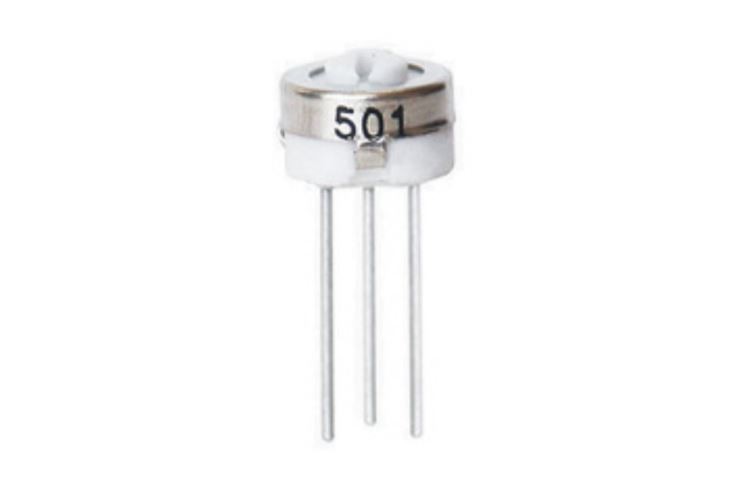In the world of electronic circuits, motor control is a crucial aspect with applications spanning from industrial machinery to consumer electronics. One of the key components in motor control circuits is the trimming potentiometer, which allows for precise adjustment of electrical signals. Among the various types of trimming potentiometers available, the 3329 Trimming Potentiometer is a product that has caught the attention of many engineers and hobbyists. As a supplier of the 3329 Trimming Potentiometer, I am often asked whether this particular potentiometer is suitable for motor control circuits. In this blog post, I will delve into the characteristics of the 3329 Trimming Potentiometer and analyze its suitability for motor control applications.
Understanding the Basics of Motor Control Circuits
Before discussing the suitability of the 3329 Trimming Potentiometer, it is essential to understand the basic requirements of motor control circuits. Motor control circuits are designed to regulate the speed, direction, and torque of an electric motor. These circuits typically involve a power supply, a control signal source, and a power amplifier. The control signal, which can be a voltage or a current, is used to adjust the operation of the motor. A trimming potentiometer can be used in these circuits to fine - tune the control signal, providing a variable resistance that can be adjusted to change the voltage or current level.
Features of the 3329 Trimming Potentiometer
The 3329 Trimming Potentiometer is a single - turn trimming potentiometer with several notable features. It offers a wide range of resistance values, typically from a few ohms to several megaohms. This wide range allows for flexibility in different circuit designs. The potentiometer has a compact size, which makes it suitable for use in space - constrained applications. It also has a relatively high precision, with a tolerance that can be as low as ±1%. This precision is important in motor control circuits, where accurate adjustment of the control signal is required.
In addition, the 3329 Trimming Potentiometer has a good temperature stability. Temperature changes can affect the resistance of a potentiometer, which in turn can cause fluctuations in the control signal. The 3329 Trimming Potentiometer is designed to minimize these effects, ensuring that the motor control circuit operates consistently over a wide temperature range.
Advantages of Using the 3329 Trimming Potentiometer in Motor Control Circuits
One of the main advantages of using the 3329 Trimming Potentiometer in motor control circuits is its ease of use. The single - turn design allows for quick and simple adjustment of the resistance. This is particularly useful during the initial setup and calibration of the motor control circuit. Engineers can easily fine - tune the control signal to achieve the desired motor performance.
The high precision of the 3329 Trimming Potentiometer is another significant advantage. In many motor control applications, such as in robotics or precision manufacturing, accurate control of the motor speed and torque is crucial. The low tolerance of the 3329 Trimming Potentiometer ensures that the control signal remains stable and accurate, resulting in more precise motor operation.
The compact size of the 3329 Trimming Potentiometer is also beneficial. In modern electronic devices, there is a growing trend towards miniaturization. The small form factor of the 3329 Trimming Potentiometer allows it to be easily integrated into small - scale motor control circuits, such as those found in drones or small appliances.
Limitations and Considerations
While the 3329 Trimming Potentiometer has many advantages, there are also some limitations and considerations when using it in motor control circuits. One of the main limitations is its power handling capacity. The 3329 Trimming Potentiometer is designed for low - power applications. In high - power motor control circuits, the potentiometer may not be able to handle the current and power levels, which can lead to overheating and premature failure.
Another consideration is the mechanical durability of the potentiometer. In some motor control applications, the potentiometer may need to be adjusted frequently. The 3329 Trimming Potentiometer has a limited number of mechanical rotations, and excessive adjustment can wear out the wiper and affect the performance of the potentiometer.
Comparison with Other Trimming Potentiometers
To better understand the suitability of the 3329 Trimming Potentiometer, it is useful to compare it with other similar products. The 3386 Trimming Potentiometer is another popular single - turn trimming potentiometer. It generally has a higher power rating compared to the 3329 Trimming Potentiometer, making it more suitable for high - power motor control applications. However, the 3386 Trimming Potentiometer is usually larger in size, which may not be ideal for space - constrained designs.
The 3362 Trimming Potentiometer is also a well - known option. It offers a similar range of resistance values and precision as the 3329 Trimming Potentiometer. However, the 3362 Trimming Potentiometer may have different temperature coefficients and mechanical characteristics, which need to be considered depending on the specific requirements of the motor control circuit.
Conclusion
In conclusion, the 3329 Trimming Potentiometer can be a suitable choice for motor control circuits, especially in low - power and space - constrained applications. Its high precision, wide range of resistance values, and compact size make it a versatile component for fine - tuning the control signal in motor control circuits. However, it is important to consider its limitations, such as its low power handling capacity and limited mechanical durability.
If you are working on a motor control circuit project and are considering using the 3329 Trimming Potentiometer, I encourage you to contact us for more information. We can provide detailed technical specifications, application notes, and samples to help you determine if the 3329 Trimming Potentiometer is the right fit for your needs. Whether you are an experienced engineer or a hobbyist, our team is ready to assist you in your procurement and application process.


References
- Horowitz, P., & Hill, W. (1989). The Art of Electronics. Cambridge University Press.
- Sedra, A. S., & Smith, K. C. (2015). Microelectronic Circuits. Oxford University Press.



